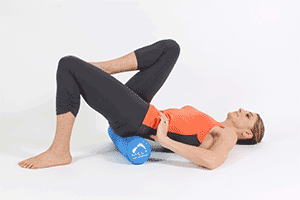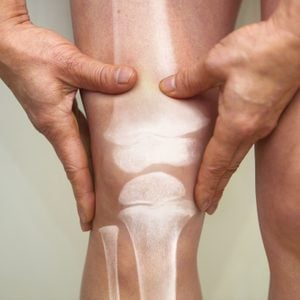Got Hip Pain? 6 Stretches That Can Make It Better
Updated: Jun. 10, 2021
Get some relief and boost your mobility with these expert-approved stretches for hip pain.
Why does my hip hurt?
The trouble with hip pain is that pinning down its source can be challenging. First of all, the “hips” are really a complex meeting point of the pelvis, spine, and legs that consists of numerous muscles, ligaments, tendons, and joints. A problem with any of these structures, or even something as “simple” as a muscle imbalance between opposing muscle groups, can lead to irritation, inflammation, and resulting pain.
(Here are possible causes for lower back and hip pain.)
According to Lev Kalika, a chiropractor and owner of New York Dynamic Neuromuscular Rehabilitation & Physical Therapy in New York City, hip pain is challenging because one size doesn’t fit all. All humans have different hip structures, and pelvises aren’t the cookie-cutter uniform image you see when looking at an anatomical model. In other words, what may cause pain or challenges for one person won’t necessarily be the same as that for the next. Plus, “Hips aren’t meant to sit for long periods,” he says.
Sitting, athleticism, and hip pain
“Humans were born to walk and run, not to sit. When we’re sitting for excessive amounts of time, our soft tissues adapt by shortening and we lose hip extension and range of motion,” he says. (Here’s what you need to know about dead butt syndrome.)
And when you add these three factors to an active childhood and adolescence, you could end up with even more problems. “Excessive athletics through early teenage years is a very common reason for the development of femoral acetabular impingement, which is an extremely common occurrence,” Kalika says.
Childhood athletics can also lead to other imbalances that don’t cause issues at the time, but may arise in adulthood. “During the years of athletics, the demands of the speed, strength, and power are not met with equal stability; therefore, muscle imbalance created by this disparity promotes microinstability in the hip joint whereby the small, deep hip stabilizer muscles can’t match the strength and power of the primary movers,” Kalika explains. (Learn the possible causes, treatments, and prevention of hip pain while running.)
Over time, these instabilities, combined with individual structural differences, and a more sedentary lifestyle that leads to changes in the range of motion can all contribute to problems and hip pain. Doing stretches for hip pain can help you better manage your pain. (Here’s how to get muscle pain relief.)
Managing hip pain
First things first, in order to manage a problem, you have to understand the problem. If your hips are just a little “creaky” and feeling tight, increasing your daily activity and incorporating active stretching into your lifestyle may be enough to help ease and alleviate the discomfort. That said, if you’re experiencing chronic pain or discomfort that interferes with daily life, or if you’re caught in the midst of an acute pain episode, it’s best to make an appointment to see a doctor rather than trying to self-treat at home.
“I don’t recommend blindly stretching the hip if you have pain,” Kalika says. (Have back pain? These are the best stretches for lower back pain.)
“Hip tightness is as common as hip hypermobility. The spheric design of the human hip joint always creates a patchy pattern of hyper-mobility and tightness; therefore, the stretching must be directionally and dynamically specific [to your needs],” he explains. For example, if you’re stretching through a part of the joint that’s already hypermobile, you’re only making it worse, Kalika says. “Contact a physiotherapist or chiropractor to specify what your stretching needs may be.”
(These are the secrets physical therapists know about you.)
Staying mobile and functional
If you’re hesitant to schedule an appointment with your doctor because your hips just feel generally tight and uncomfortable, keep in mind that balance is the keep component of a pain and injury-free body. As Kalika indicated, the human body is meant to move, and micro-imbalances and an inactive lifestyle can contribute to problems.
If your job requires you to sit for much of the day, make a point of getting up from your workspace every hour to move around for a few minutes. Also, aim to meet the Centers for Disease Control and Prevention’s physical activity guidelines for adults, which includes at least 150 minutes of cardiovascular activity each week and at least two days of strength-focused activity. You also want to make sure you’re moving your hips through all angles and ranges of motion, including flexion, extension, adduction, abduction, and rotation. (Know the difference between abduction vs. adduction to better protect your joints.)
If you only ever focus on flexion and extension (as with walking or cycling), the movement patterns at your hips won’t be balanced. Strength training, dance, swimming, and yoga are all good options to incorporate multi-planar movement into your activity regimen. (These are the everyday movements that cause joint pain.)
Static vs. dynamic stretching for hip pain
When it comes to stretching, the important thing to remember is that, as Kalika says, “Static stretching is overrated.” In other words, sitting and holding a stretch in place for 30 to 60 seconds without incorporating movement is unlikely to be of much help.
“You’ll rarely find a moment in any kind of movement where the muscle is being statically stretched,” he says.
He adds, “The way our motor system is designed is by decelerating movement with eccentric contraction. Eccentric contraction is dynamic stretching. Muscles need to be stretched during specific movements, which lengthens muscle fibers while you control the movement.”
As an example, when you sit down and try to lean forward to touch your toes, your body and brain naturally send out signals that say, “Hey wait, stop!” as you reach the end of your body’s comfortable range of motion. Moving to the end of your comfortable stretch is the eccentric contraction. Consciously controlling this contraction to the end of your range of motion, and back out of it again, is the type of dynamic stretching that Kalika is referring to.
Done correctly, you can increase flexibility at a joint while protecting your mechanical structure. “This is the kind of stretching that can repair muscle, tendons, ligaments, and motor control in the brain,” he says. (Avoid these fitness myths that can damage your health.)
It’s about mobility, not flexibility
It’s also important to remember that becoming more flexible at the hips may not actually help you, and in some cases, may increase problems or pain. You should work to restore areas of limited mobility to their ideal range of motion if they have become affected over time due to muscle imbalances, structural issues, or a sedentary lifestyle. For this reason, getting feedback from a physiotherapist or chiropractor on your personal limitations is ideal before you start a stretching program.
Stretches for hip pain
But if you’re looking to test out stretches that will focus on each area of hip mobility, this stretching program put together by Megan Wise, a licensed physical therapist, strength and conditioning coach, and Pilates teacher based in New York City, is a good place to start. “The kind of stretches I incorporate with my patients and clients are more active stretches and feel more like exercise than just a relaxing position,” Wise says. “I tell people to incorporate them into their workouts or do them after a workout.”
For each of the following stretches, alternate between contracting the stretched muscle and holding at the end of the movement for 10 to 20 seconds before relaxing the stretched muscle, alternating between the contracted and relaxed states for one to two minutes total. Always be sure to target each side of the body equally.
(Remember, here’s why you should stretch before a workout.)
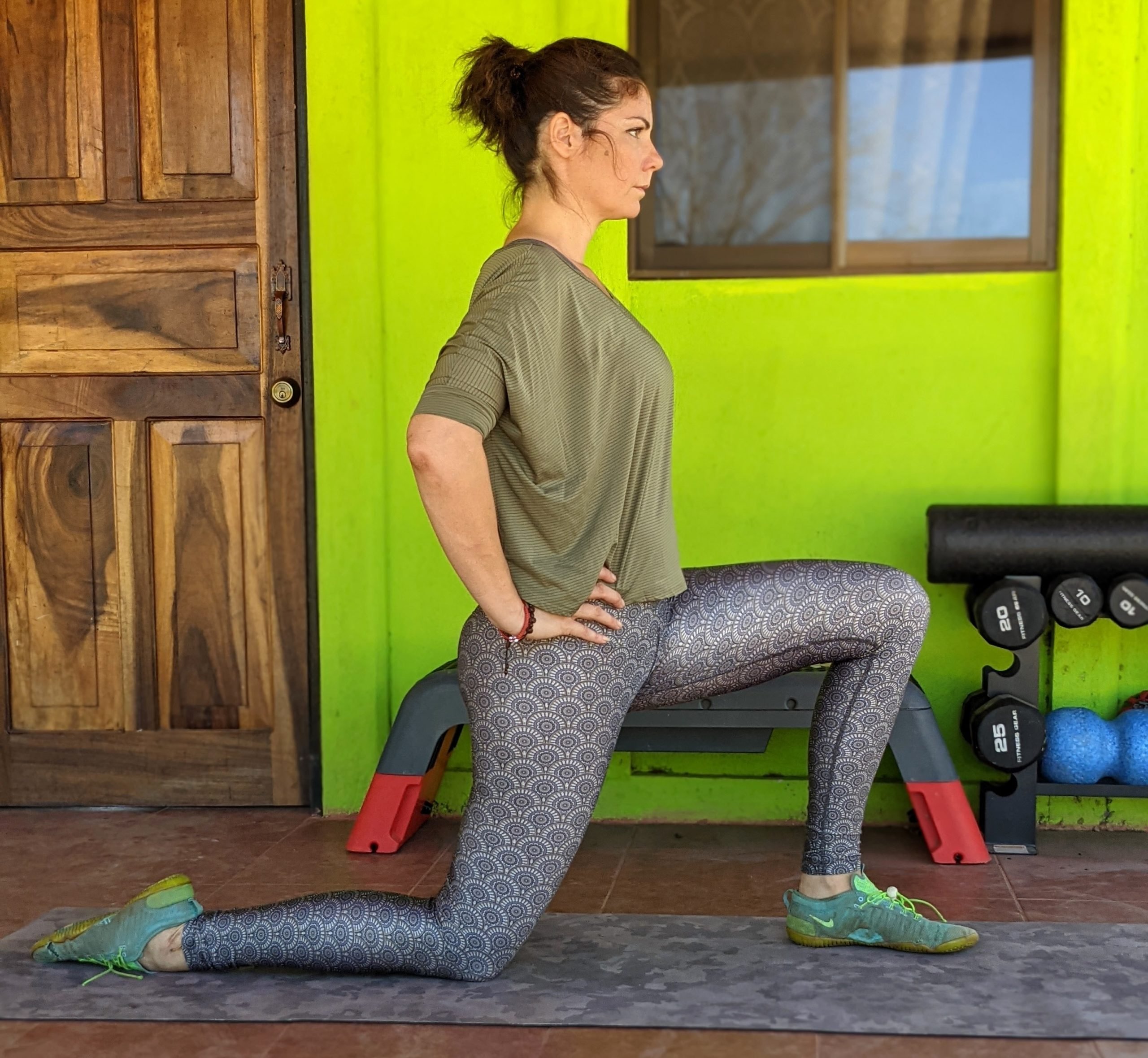
Kneeling hip flexor stretch
Target the front of your hip with a kneeling hip flexor stretch. Kneel on the ground as though you were preparing to propose to someone, your left foot planted on the mat in front of you, your left knee and hip bent at 90-degree angles. Your right knee should be directly under your right hip, so your right hip is extended.
For this stretch, you’ll end up feeling it along the front of your right hip.
Engage your core and keep your torso straight and tall. Tuck your pelvis under and press your right hip forward until you feel a stretch. Hold for 10 to 20 seconds, release, then repeat for a total of two minutes before switching sides.
(Try these morning stretches for an energy boost.)
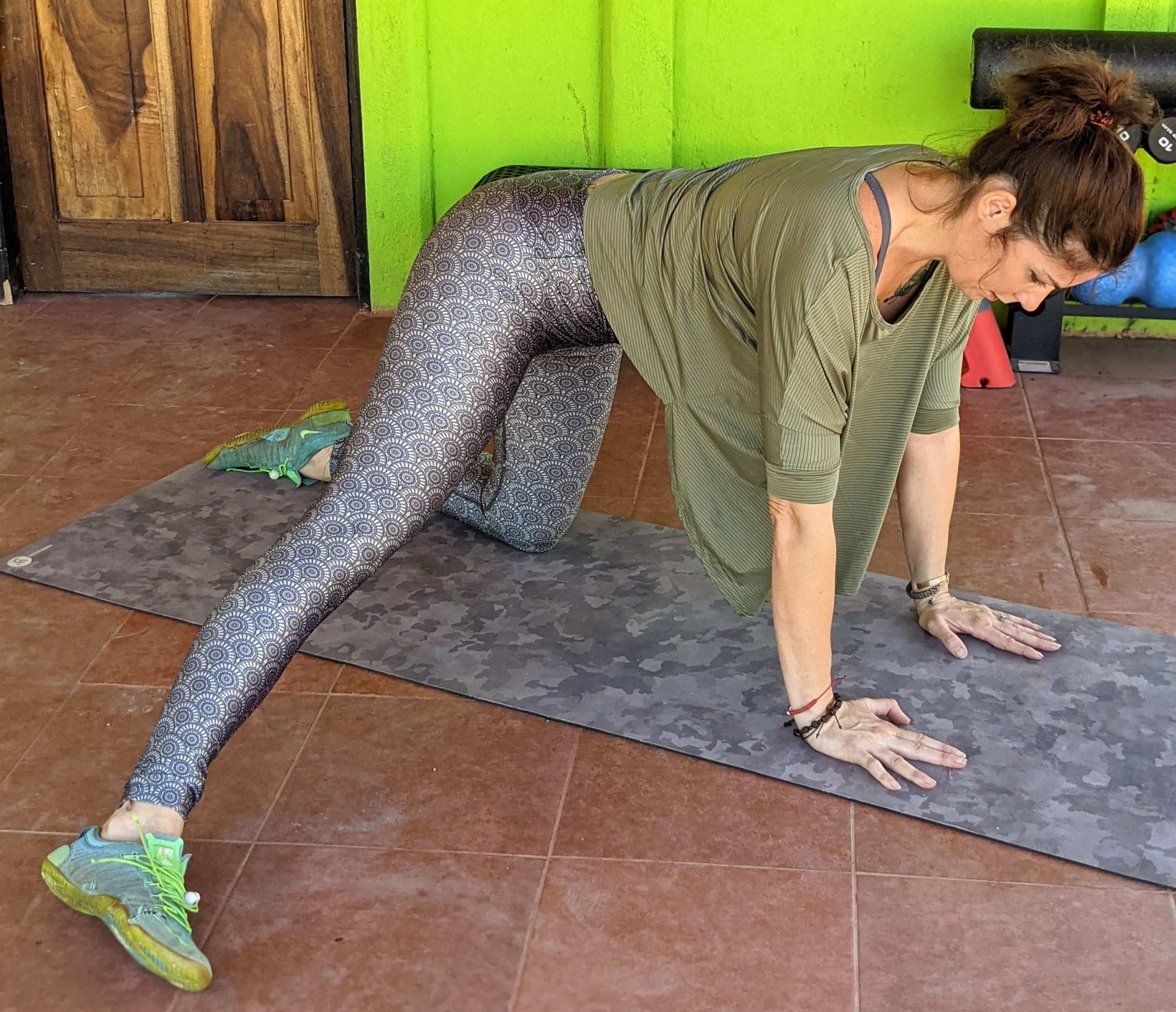
Adductor rock back
Start on your hands and knees on a mat, your knees directly under your hips, your palms directly under your shoulders. Your back should remain flat and your neck aligned with your spine. Extend your right leg out to the side, placing the inside of your right foot on the ground so you feel a stretch through the inside of your right hip.
From this position, press back through your palms, pushing your hips behind your knees to deepen the stretch on the inside of your right hip (your adductors). At the end of your stretch, hold for 10 to 20 seconds, contracting the muscles, then release to return to the starting position. Repeat for one to two total minutes before switching sides.
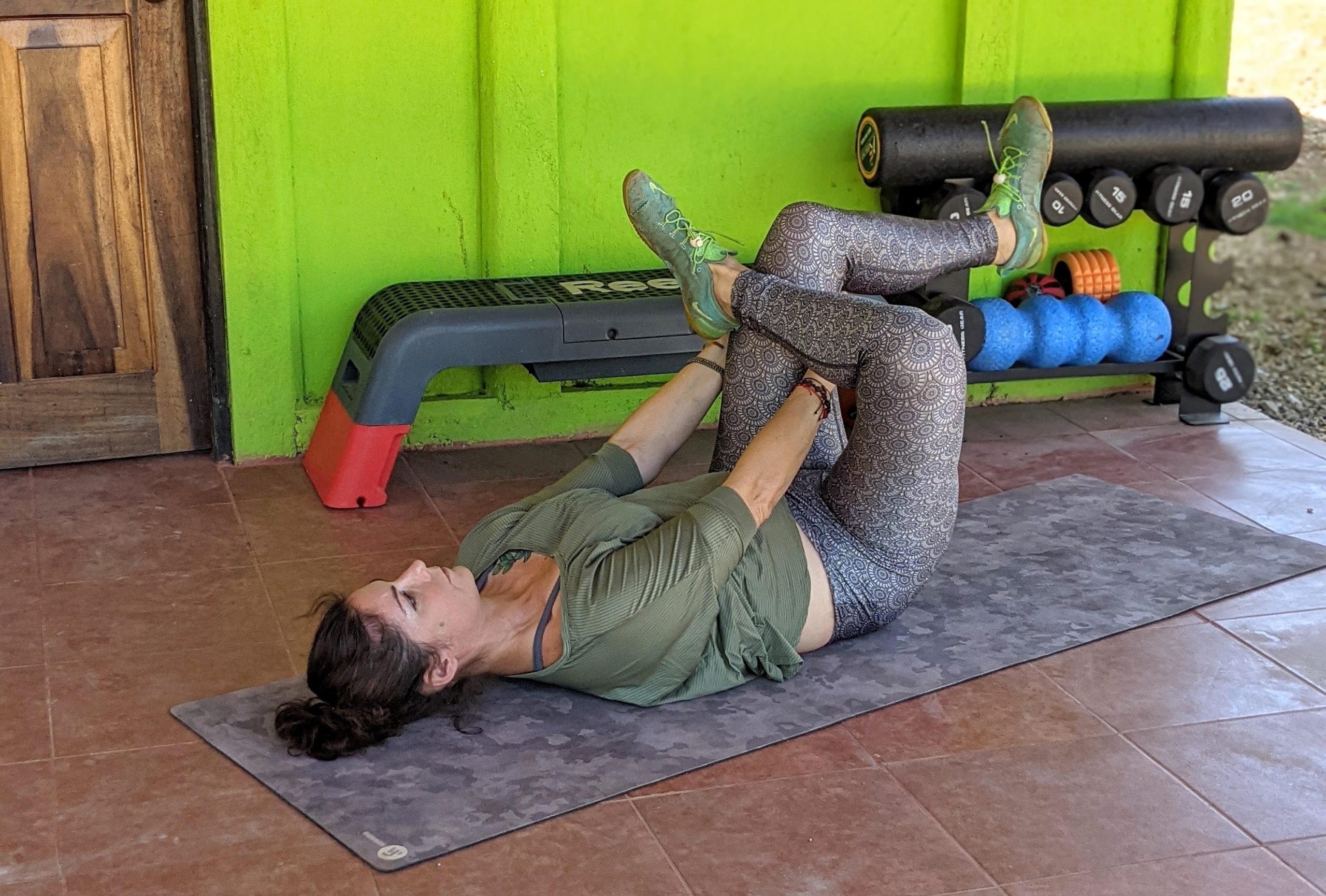
Supine figure 4 stretch
To do the figure 4 stretch, lie on your back on a mat, your knees bent, feet flat on the mat. Lift your right foot and cross it over your left thigh, opening your right knee outward, creating a “4” with your legs. Lift your left foot from the floor, positioning your left knee above your left hip so your hip and knee are each bent at 90-degrees.
Link both hands behind your left thigh and gently pull your legs closer to your torso, feeling the stretch through the back of your hips, glutes, and outer right thigh. At the end of your stretch, hold for 10 to 20 seconds, contracting the muscles, then release to return to the starting position. Repeat for one to two total minutes before switching sides.
(If you’re feeling stressed, try these stretching exercises for stress relief.)
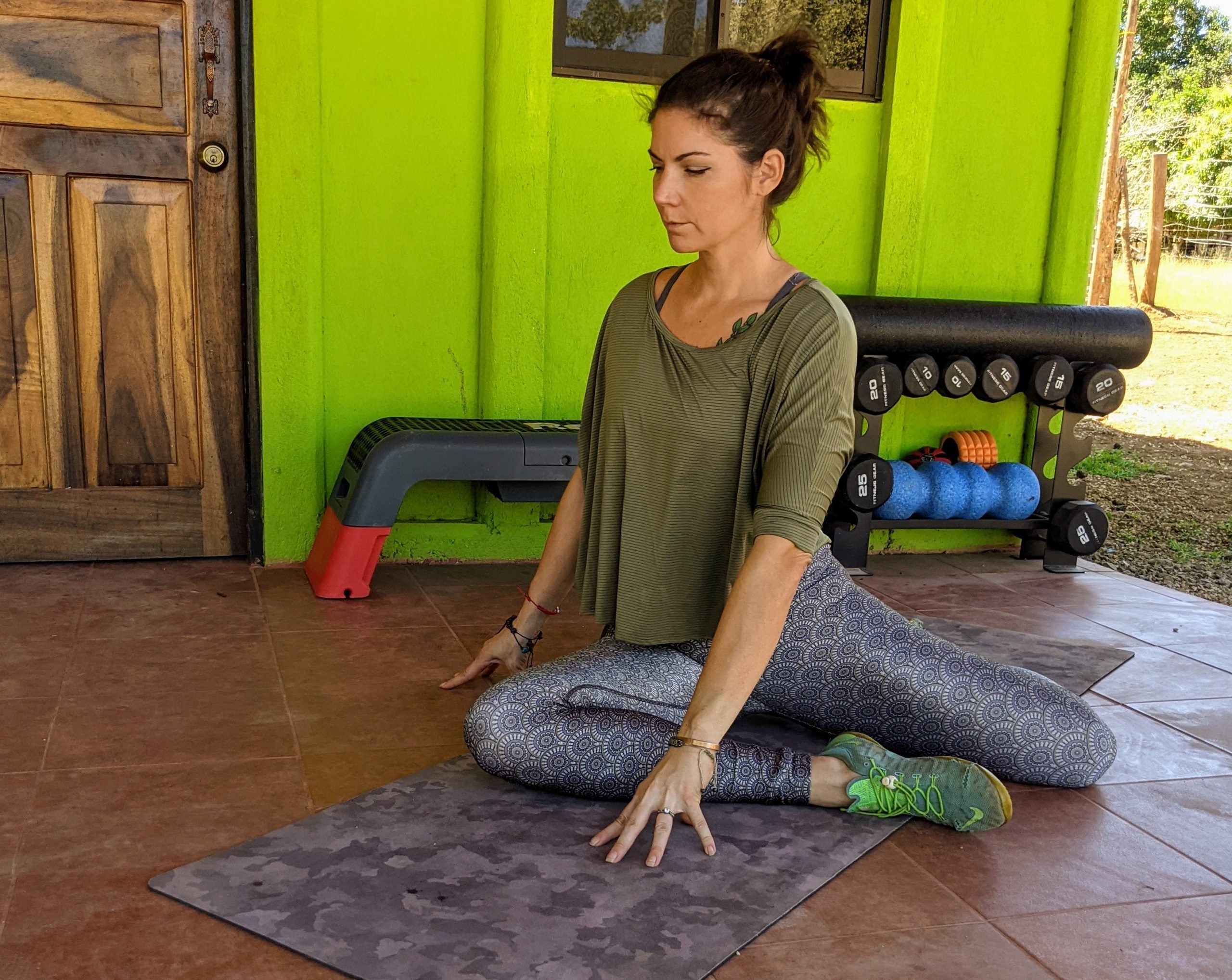
Hip internal rotation
Sit on your mat with both knees bent, feet flat on the floor. Allow your right knee to open outward, the outside of your right leg touching the floor. Sweep your left leg behind you (keeping your knee bent), bringing the inside of your left leg to touch the floor.
Keep your torso straight and tall. You should feel a stretch on the inside of your left hip. From this position, place the fingertips of your left hand in front of your right shin and the fingertips of your right hand to the outside of your right thigh.
Take a breath in and rotate your torso to align with your right thigh. Exhale and lean forward slightly, deepening the stretch on the inside of your left hip. Hold at the end of your stretch for 10 to 20 seconds before releasing back to the starting position.
Repeat for one or two total minutes before switching sides.
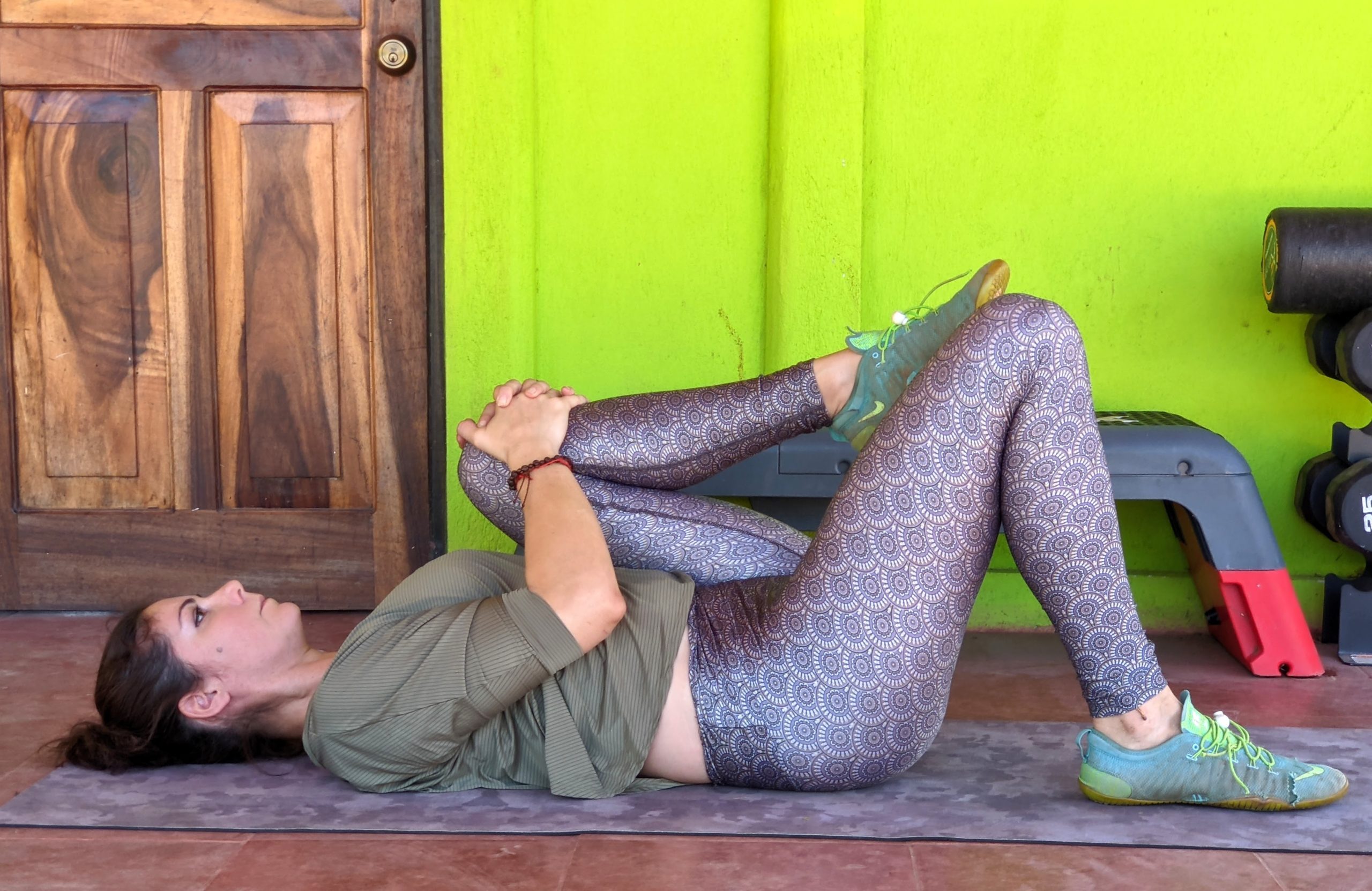
Hip extensor
Another great stretch for your hip flexors and all the muscles involved with extending your hips is an easy supine hip extension. Lie on your back on a mat, your knees bent, feet flat on the floor. Lift your left foot from the floor, and bend your knee and hip, bringing your knee to your torso.
Place your hands around your left shin to pull your knee closer to your torso. From this position, lift your right foot from the floor and extend your right leg fully, feeling the stretch at the front of your right hip and thigh. Keep your core engaged and your hips and low back steady and stable—you shouldn’t arch your back or shift your hips to perform the movement.
Only extend as far as is comfortable for you, and if needed, adjust the position of your left knee (closer or farther from your body) to accommodate the stretch. At the end of your limit, hold the position for 10 to 20 seconds before reversing the movement and returning to the starting position. Continue for one or two total minutes before switching sides.
(While you’re on the floor, try the scorpion stretch for another great hip opener.)
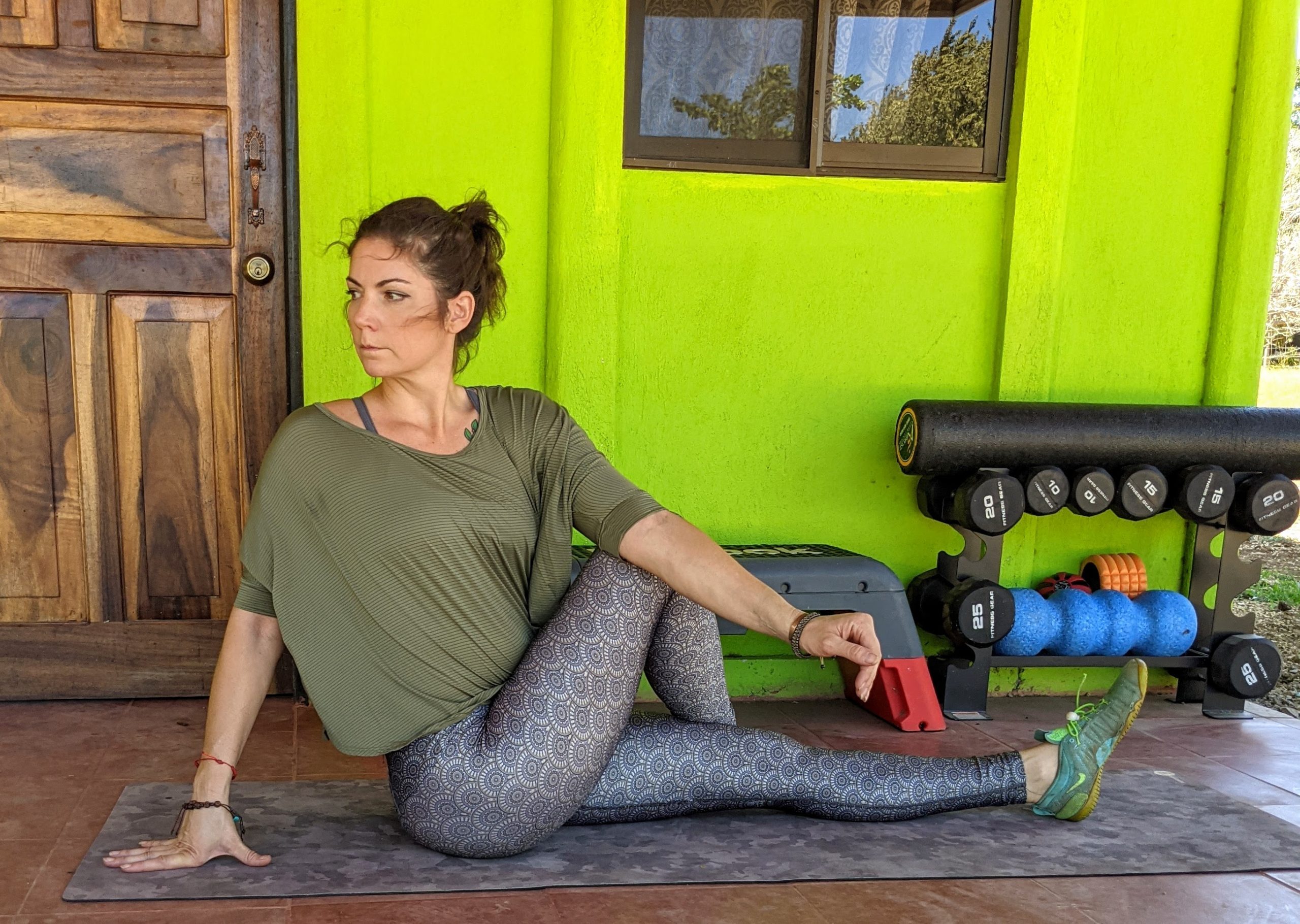
Hip abductor
To stretch the outside of your hips, try this seated twist exercise. Sit on a mat on the floor, your torso straight and tall, your knees bent, your feet flat on the floor. Extend your left leg directly in front of you, then cross your right foot over your left thigh, placing your left foot flat on the floor to the left of your left thigh.
Take a deep breath in, and as you exhale, twist your torso to the right. Then, place your right hand on the floor behind your right hip and reach your left elbow to press on the outside of your right thigh, deepening the stretch to the outside of your right hip. With each inhale, focus on lifting your chest to maintain posture, and with each exhale, try to deepen the stretch.
Hold at the end of your limit for 10 to 20 seconds, then release to the starting position. Repeat for a total of one to two minutes before switching sides.


